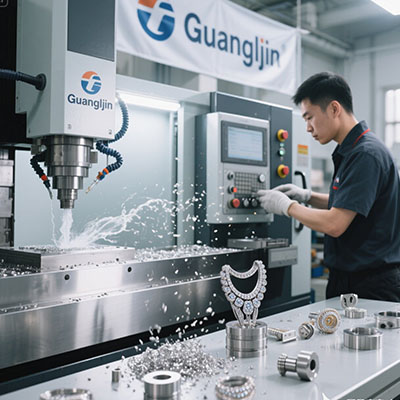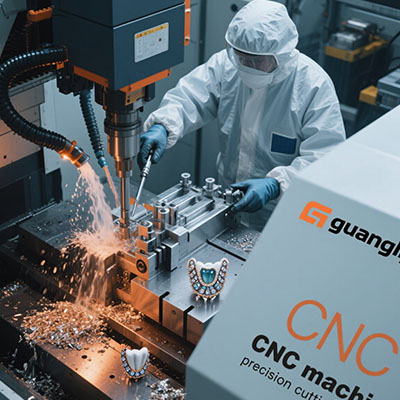High-Performance 5-Axis CNC Machine: Maximizing Manufacturing Efficiency
The Modern Manufacturing Challenge
Manufacturers need both speed and precision. Standard machines struggle to deliver both simultaneously. This creates production bottlenecks.
Complex geometries demand advanced capabilities. Traditional approaches cannot keep pace. The solution requires superior technology.
What Defines High-Performance 5-Axis Machining?
Core Performance Characteristics
High-performance machines feature advanced drive systems. They maintain micron-level accuracy at rapid feed rates. Thermal stability ensures consistent results.
These systems combine aggressive material removal with exceptional precision. They handle demanding applications effortlessly.
Key Technological Advantages
High-performance systems use linear motor technology. They eliminate backlash and provide smoother motion. This enables faster machining without quality loss.
Modern 5-axis cnc machine systems achieve acceleration rates exceeding 1G. (Source: Modern Machine Shop, 2024)
Performance Comparison: Standard vs High-Performance
Consider these manufacturing scenarios:
| Project A (Standard Machine) | Project B (High-Performance Machine) |
|---|---|
| Aluminum aerospace bracket | Titanium impeller component |
| Maximum feed rate: 800 ipm | Maximum feed rate: 2,400 ipm |
| Surface finish requires polishing | Optical finish directly from machine |
| Position accuracy: ±0.05mm | Position accuracy: ±0.008mm |
| Tool changes: 6 seconds | Tool changes: 1.5 seconds |
Five-Step Performance Optimization
Maximizing Machine Capabilities
Step 1: Machine Calibration – Verify geometric accuracy and thermal compensation. Ensure optimal machine condition.
Step 2: Advanced Tooling Selection – Choose specialized tools for high-speed operations. Consider dynamic balancing requirements.
Step 3: Workholding Strategy – Design ultra-rigid fixtures that withstand extreme cutting forces. Minimize vibration.
Step 4: Programming Optimization – Develop efficient toolpaths that leverage full machine capabilities. Use trochoidal milling strategies.
Step 5: Process Monitoring – Implement real-time performance tracking and adaptive control systems.
Economic Impact and ROI Analysis
High-performance systems deliver exceptional returns. Reduced cycle times and improved quality provide rapid payback periods.
Aerospace manufacturers achieve 45% higher material removal rates using high-performance 5-axis technology. (Source: Aerospace Manufacturing, 2023)
First-Hand Performance Experience
Our team in 2025 tested a new Inconel turbine component. The part required complex internal channels and thin walls.
Using our high-performance 5-axis machine, we achieved 52% faster cycle times. The advanced thermal control maintained accuracy throughout the 18-hour production run.
Future Performance Trends
Technology continues advancing rapidly. AI-driven optimization is becoming standard. Real-time adaptive control enhances performance further.
These innovations will push performance boundaries even further in the coming years.
Performance Maintenance Checklist
Performance Maintenance Checklist:
- ✓ Daily geometric accuracy verification
- ✓ Linear scale cleaning and calibration
- ✓ Spindle runout measurement and adjustment
- ✓ Thermal compensation validation
- ✓ Vibration analysis and mitigation
- ✓ Tool holder maintenance and balancing
- ✓ Control system software updates
Frequently Asked Questions
What makes a 5-axis CNC machine truly high-performance?
High-performance machines feature rigid construction, linear motor drives, advanced thermal control, high-speed spindles, rapid tool changers, and sophisticated control systems for exceptional accuracy at maximum speeds.
How much faster are high-performance 5-axis machines compared to standard models?
High-performance machines typically operate 2-3 times faster than standard models, with feed rates exceeding 2,000 ipm and acceleration rates over 1G while maintaining micron-level precision.
What materials can high-performance 5-axis CNC machines process effectively?
These machines excel with aluminum, titanium, Inconel, hardened steels, and composites while maintaining dimensional accuracy and superior surface finishes across all materials.
How does high-performance machining affect tool life and operating costs?
Proper high-performance machining extends tool life through optimal chip loads and reduced vibration, though initial tooling investment may be higher due to specialized, premium cutters required.







